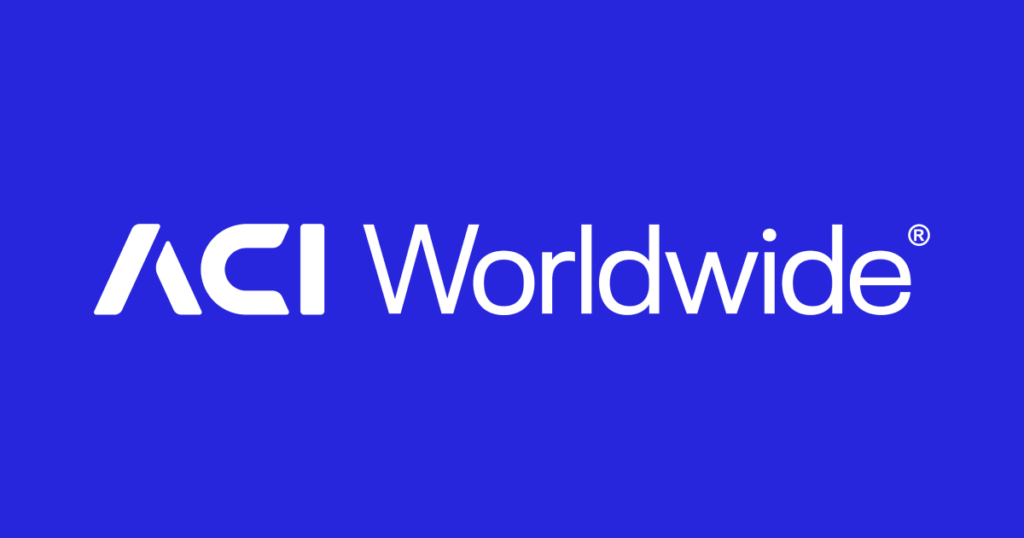- Solutions
- Banking
-
- ACI ConneticUnified cloud payments platform
- AcquiringDigital acceptance, merchant management
- IssuingDigital payments and accounts issuing
- Fraud managementReal-time enterprise fraud management
- RTGS / Wires and cross-borderMulti-bank, multi-currency processing
- Real-time, instant paymentsComplete real-time payments processing
- ATMsSelf-service, omnichannel digital experience
- Central infrastructureInnovative real-time payment infrastructure
- NEW Redefining the payments hub: Solving today’s banking payment challenges
-
- Merchant payments
- ACI Payments Orchestration PlatformEnable customer journeys across commerce channels, accept payments, prevent fraud and optimize your payments journey
- In-storeDynamic, modern in-store payments
- eCommerceOnline and mobile payments
- Alternative payment methodsGive more ways to pay
- Value-added servicesEngagement, optimization and reporting
- Fraud managementEnd-to-end fraud orchestration
- Risk, security, and complianceAchieve and maintain compliance
- NEW Datos names ACI Worldwide best-in-class in payments orchestration
- Industries we serve
- Billing and bill payments
- ACI SpeedpayDrive customer satisfaction with the widest range of bill pay options in the industry.
- Bill payment APIs and SDKsOutsource bill payment processing
- Fraud managementAI-based fraud orchestration technology
- Alternative payment methodsGive more ways to pay
- Loan servicingPreferred loan payment options
- Treasury managementStreamline and integrate your back office
- Automated debt collectionImprove your collections process
- Digital walletsManage digital cards and payments
- PCI compliance and securityAchieve and maintain PCI compliance
- Industries We Serve
- Fraud management and payments intelligence
- Fraud managementFraud solutions to minimize risk and prevent fraud
- Fraud management for bankingEnterprise-wide fraud prevention
- Anti-money launderingStay ahead of money-laundering schemes
- Robotic process automationAutomate payment processing operations
- Fraud management in the cloudProtecting your business in the cloud
- Fraud management for merchantsProtect payments from end to end
- ChargebacksPrevent chargebacks before they happen
- SCA complianceAchieve and maintain SCA compliance
- Digital identity solutionsConfirm identities with behavioral analytics
- NEW Scamscope fraud report: APP scam trends from around the globe
CompanyCustomersPartners
Home
On this page
The payments industry has a messaging problem. For years, we’ve told ourselves and our customers that payments are becoming “invisible” or “disappearing.” It’s a compelling language, yet it’s fundamentally inaccurate. And more importantly, it’s not what consumers or businesses actually want; what they really expect is transparency.
Why “invisible” and “disappearing” miss the mark
Payments aren’t disappearing. They’re becoming easier, smarter, faster, and more embedded into the experiences people care about. Embedded doesn’t mean invisible, and it shouldn’t. Consumers expect payments to be clear, which makes transparency a feature of modern payments.
When we promote a payment as invisible, we could undermine the payee’s control and ability to make an informed decision. Promoting invisibility can erode the trust that consumers and businesses depend on and assume in each other.
This distinction matters. Invisible suggests something hidden, opaque, or outside of user control. Embedded means seamlessly integrated while remaining clear and accessible. That difference shapes how we build products, communicate value, and maintain customer trust and confidence.
The three reasons why visibility and transparency in payments matter
Payments influence decisions
Consider rideshare apps. Before confirming a ride, users see pricing options based on vehicle type, estimated time, and passenger capacity. After the trip, they choose whether to add a tip. The payment isn’t hidden: it’s central to the decision. Removing that visibility would eliminate the ability to make an informed choice.
Transparency prevents disruption
Auto-draft payments for subscriptions or recurring bills depend on clear communication. Customers receive pre-payment notices with amounts and statement links, followed by a confirmation once the payment is processed. If a payment fails, they get an opportunity to resolve it before service is interrupted. Visibility here isn’t optional: it’s essential to continuity and trust.
Clarity Reduces Friction
Unexpected charges create confusion. A one-time international roaming fee on a phone bill or a movie purchase on a streaming service can look suspicious if not properly explained. Transparent itemization prevents unnecessary customer service calls, chargebacks, and erosion of trust.
The path forward
It’s time to retire “invisible and disappearing” from the payments industry vocabulary. Instead, let’s champion and deliver modern, easy, seamless, and transparent experiences that meet consumer expectations. Embedded payments should empower users with clarity and control, not obscure the transaction behind a veil of convenience.
The future of payments isn’t about making them disappear. It’s about making them work better: visibly, confidently, and in full view of the people who depend on them.


